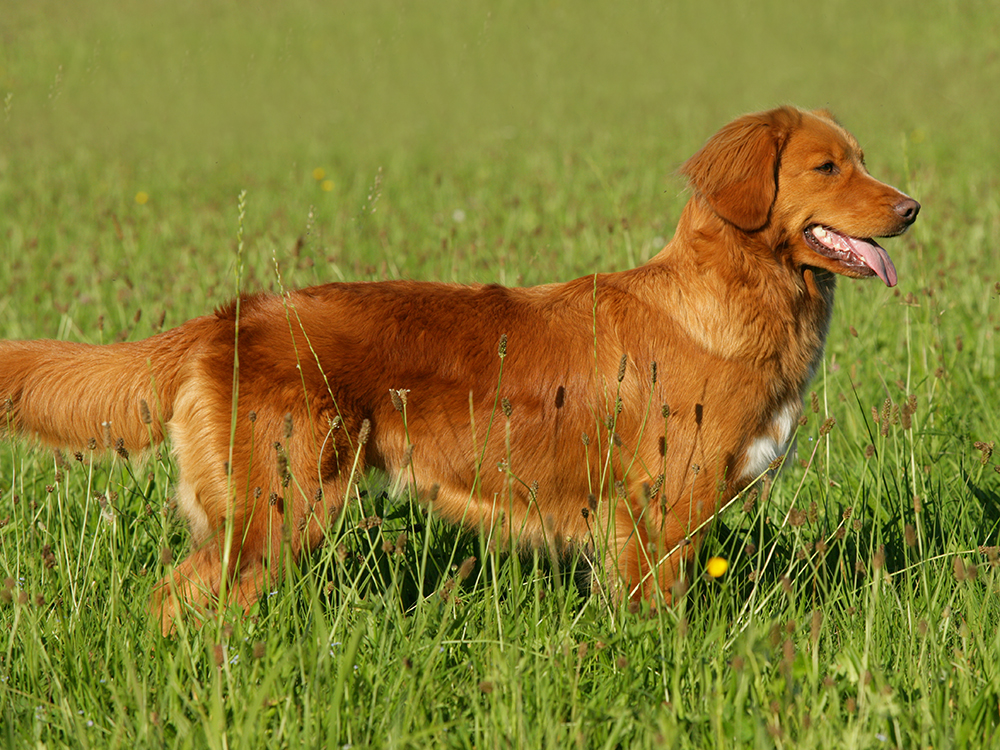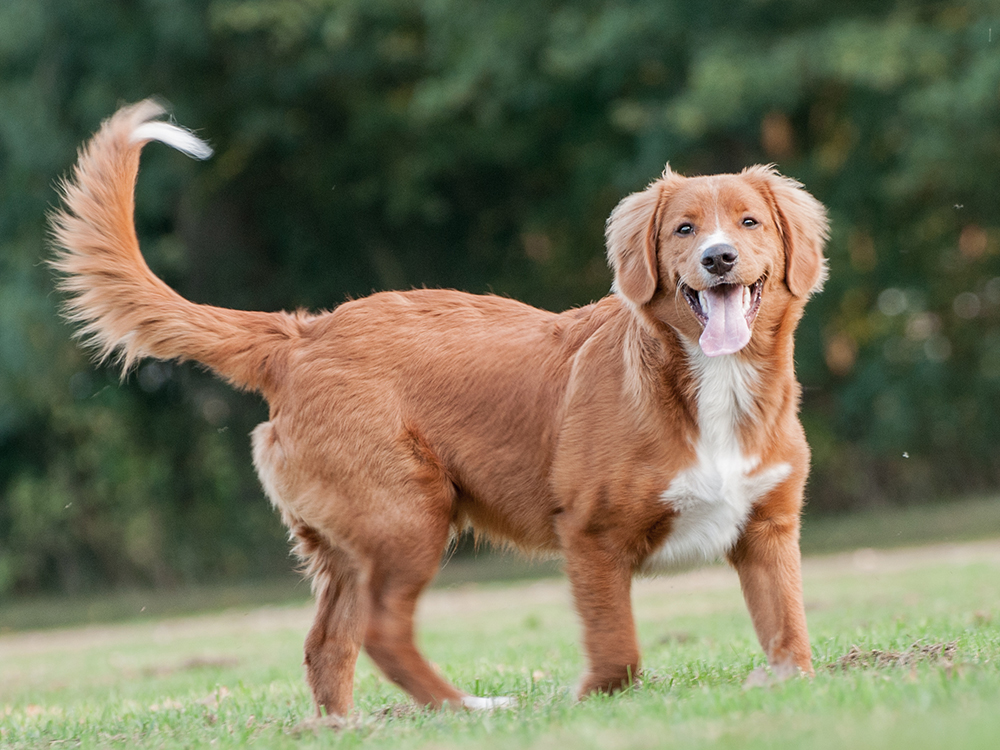
Nova Scotia Duck Tolling Retriever Breed Pictures
Vital Breed Stats
| Height: | 43 - 53 cm M | 43 - 53 cm F |
| Weight: | 17 - 23 kg M | 17 - 23 kg F |
| Breed Group: | Gundog Dog Group |
| Life Expectancy: | 11 - 14 years |
| KC Registered: | No |
Breed Characteristics
| Size: |  |
| Grooming: |  |
| Exercise Level: |  |
| Barking Level: |  |
| Good with Children: |  |
| Good with other pets: |  |
| Affectionate: |  |
| Protective: |  |
| Cost to Keep: |  |
Give a thumbs up if you love the Nova Scotia Duck Tolling Retriever

0
More About the Breed
History
The Nova Scotia Duck Tolling Retriever dates back to the 1890s. It was bred as a working gun dog in Little River Harbour in Yarmouth County, Nova Scotia. The breed proved to be a highly-valued retriever. It was originally referred to as the Little River duck dog before it was officially recognised as a purebred in 1945 by the Canadian Kennel Club. Later, its name was changed to Nova Scotia duck tolling retriever. The breed is registered with the Kennel Club in the UK.
The toller is a mixture of retriever, spaniel, collie, and setter breeds. In fact, it is believed to have been developed by crossing Golden Retriever, Flat-coated Retriever, Labrador, Cocker Spaniel, the Chesapeake Bay, Irish Setter, some working collies, and spitz-type dogs. The breed was said to have been perfected in the second half of the nineteenth century.
Over the years since it was developed, the toller has become a popular choice as a family pet and companion dog. In 1995, the breed was declared as the provincial dog of Nova Scotia. Today, however, the number of NNova Scotia Duck Tolling Retriever remains low, which means getting a puppy will be difficult to accomplish.
Appearance
The Nova Scotia Duck Tolling Retriever is the smallest amongst the retriever breeds. It weighs 35–50 pounds and stands 45–51 centimetres at the withers. It boasts of high energy and stamina typical to a retriever. Appearance-wise, its head is wedge-shaped with a tapered muzzle. It has a strong jaw but a soft mouth for retrieving. The ears drop have rounded tips but are often set high atop the head. The eyes are medium in size and almond-shaped. Eye colours usually match the colour of its coat or slightly darker. The tail is feathered and carried low when relaxed, and high and curved when alert.
The toller sports a medium-length double coat that is comprised of a straight, weather-resistant topcoat and a dense undercoat that is soft to touch. The hair may be slightly wavy at the back whilst a feathering is present at the throat, behind the ears, thighs, and legs. The toller comes in colours of buff, buff and white, red and white.
Grooming
Temperament
Intelligence
The Nova Scotia Duck Tolling Retriever is often described as having a personality of a golden retriever and/or a terrier. This dog breed has a sense of humour, is outgoing and lively, but when it is not playing or hunting, it is content and quiet inside the house. The toller is highly adaptable and can quickly adjust from one environment to another. It is an excellent watchdog, reserved around strangers, and barks when necessary.
The toller is smart, independent, and active, which makes it a delight to house-train. It is also eager to please, so dog training is an easy feat. It is a great family dog, but it is suitable for outdoorsy people. Keeping the toller busy with mentally and physically stimulating activities is a commitment, else it becomes destructive.
Nutrition
- Senior and less active: up to 986 calories daily
- Typical adults: 1,300 to 1109 calories daily
- Physically active/working dogs: 1233 calories daily, depending on activity level
Feeding
Health
Exercise
Cost of Ownership
Owning a dog might be a little expensive. However, the costs will depend on the type of dog you will want to buy. There are small dogs that are cheap to purchase but with absolutely expensive health disorders, whilst there are large dogs that may cost you more in food but will relatively stay healthy, thus saving you unnecessary trips to the vet.
When you buy a Nova Scotia Duck Tolling Retriever puppy, prepare to pay the standard price of no lower than £1,000 or £1,200 if you buy from a reputable breeder. Pet insurance will likely cost you £20 to £50 a month, whilst veterinary care can quickly cost you £1000 in a year. Then, dog supplies, albeit one-off, will also cost you around £200. Overall, raising a toller will put you out of £70 to £100 a month.
Is a Nova Scotia Duck Tolling Retriever Right for You?
- The Nova Scotia Duck Tolling Retriever is an outgoing and affectionate dog.
- It is an excellent watchdog, reserved around strangers, and barks when necessary.
- It is intelligent and eager to please, so dog training is an easy feat.
- It is a light shedder and only requires brushing once a week.
- It is a great family dog, but it is more suitable for outdoorsy people.
- It is a highly-energetic dog and requires at least two hours of daily exercise.
















